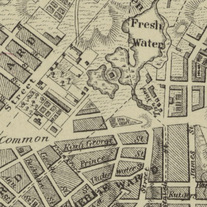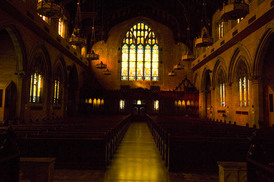St. Philip's Episcopalian Church
The congregation of St. Philip’s has roots that reach back to 1704. That was when Elias Neau, a Frenchman who had himself suffered slavery, opened his home to teach enslaved New Yorkers to read the Bible. Neau was connected to Trinity Church on Wall Street, and soon Neau’s students began to worship there on Sunday afternoons. Trinity Church was segregated.
As the black worshipers grew frustrated with the church’s refusal to condemn slavery or end the segregation, they began to meet separately, forming the Free African Church of St. Philip. In 1818, skilled carpenters among the group built a small wood church on Centre Street, near Worth. The church immediately became a center of mutual aid and anti-slavery activities as well as of worship. It grew to become one of the largest black congregations in New York, in spite of fires, racist attacks, and riots. After a fire burned the wooden church, a brick one was built. It survived a riot of 1834, when the church organ, furniture, and much of the building was destroyed by a white mob. It was attacked again during the Civil War Draft Riot, and the police used St. Philip’s as a barracks for militia and police as they battled thousands of enraged whites for control of the city.
As New York grew and blacks moved north, the church moved, too, first to 25th Street and finally to 134th Street in 1910. There, St. Philip’s continues its tradition of worship as well as its work for social and economic justice.
This entry contributed by
Curriculum Concepts International
Related Media
Video

|
Kellie Jones, Columbia University Professor of Art History and Archeology, describes St. Philip's Church
|
Images

|
Located at 204 W. 134th Street, the present church building is a New York City Designated Landmark. It was designed by the first African American architect licensed in New York.
|

|
St. Philip’s Episcopal Church was a black center for worship, mutual aid, and activism throughout the 1800s. It was located at 31 Centre Street between Worth and Leonard until 1886.
|

|
A view of St. Philip's P.E. Church in 1925.
|






